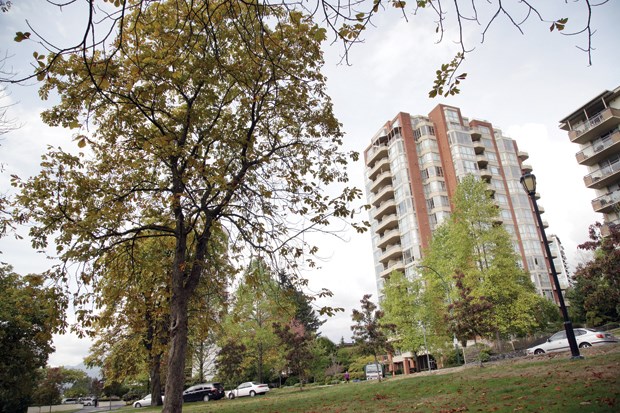Today is the fifth annual National Tree Day in Canada, which coincides with National Forest Week.
If you weren't aware of National Tree Day, you are not alone. We often take our rich heritage of trees and lush forest cover for granted, which is why Tree Canada (treecanada.ca), encourages Canadians to celebrate trees each year.
The recent storm weather event has refreshed in our minds that urban trees are under considerable stress from insects, disease, drought, wind storms and vandals. It is interesting to note that recent comments in the media describing the summer "sail effect" as a major cause of blowdowns across our region does not accurately describe why so many trees blew down during our late summer storm. If you investigate a little closer, the primary cause of many of those tree blowdowns was damage to the tree's root system related to nearby construction, poor soil preparation or incorrect tree selection. For example, the trees that blew down along the Trans Canada Highway were recently affected by widening of the highway, which stripped the adjoining tree cover from the ecosystem and constructiondamaged root systems were unable to support those trees during the windstorm.
Similar causes can be found for many other trees across our region that blew down during the storm. Many of the affected trees were planted in shallow soils, which limited rooting depth and width. And many of the wind-affected trees were planted in tight spaces in road medians or sandwiched between a sidewalk and a road leaving little room for lateral rooting. The sail effect was a contributing factor but not the primary problem.
Trees do not blow down because they are too tall or big; trees blow down because of other factors that contribute to destabilization. For example, choosing a coniferous tree that has a wide growing but shallow root system and planting it on shallow soils will ultimately lead to failure during strong wind storms.
Deciduous trees with their comparatively deeper root systems would be a better choice to plant in shallow soils. Incorrect soil preparation is another cause of tree failure because if the tree cannot grow wide and deep into the surrounding soil, the tree will not produce a robust root system to hold itself up during extreme weather events. Beyond incorrect pruning practises such as tree topping, construction damage caused to a tree's root system is the most common reason for tree failure during wind storms. Digging into a tree's root system during construction cuts off parts of the root system thereby weakening the tree in future.
And construction damage inflicted upon roots allows soil-borne pathogens to enter the wounded roots causing disease, which weakens the tree. Other causes such as soil compaction on the root zone and trunk damage caused by people and machines also contribute to tree decline and failure.
A recent spatially continuous mapping of worldwide tree density published on Nature.com revealed that there are approximately three trillion trees on planet Earth. While that seems like a lot of trees, researchers also estimate that more than 15 billion trees are cut down worldwide each year, and the number of trees on the Earth has been reduced by approximately 46 per cent since the start of human civilization.
Canada ranks number two in the world, behind Russia, as one of the biggest tree cutting nations with approximately 2.48 million hectares of gross forest cover loss between 2012 and 2014. Canadians do replant a large number of trees, for instance, Tree Canada has planted 80 million trees over the past decade. And those numbers do not include the millions of trees planted by forestry companies or municipal tree planting in our cities. However, tree planting from all sources including commercial reforestation do not come close to the number of hectares of gross forest cover lost to logging, mining and land development.
I have spoken before about the many scientifically proven benefits of growing trees including managing storm water runoff, cooling our heat-sink cities, providing a home to many forms of life and improving property value. If those facts are not enough motivation for anyone to plant and protect trees, consider the following. A study published on Nature.com found that, "People who live in neighborhoods with a higher density of trees on their streets report significantly higher health perception." And, "Having 10 more trees in a city block, on average, improves health perception in ways comparable to an increase in annual personal income of $10,000 or moving to a neighborhood with $10,000 higher median income or being seven years younger." So if you want to breathe clean air and help care for Mother Earth, plant a tree in your garden and feel healthier and younger.
Todd Major is a journeyman horticulturist, garden designer and builder, teacher and organic advocate. [email protected]



